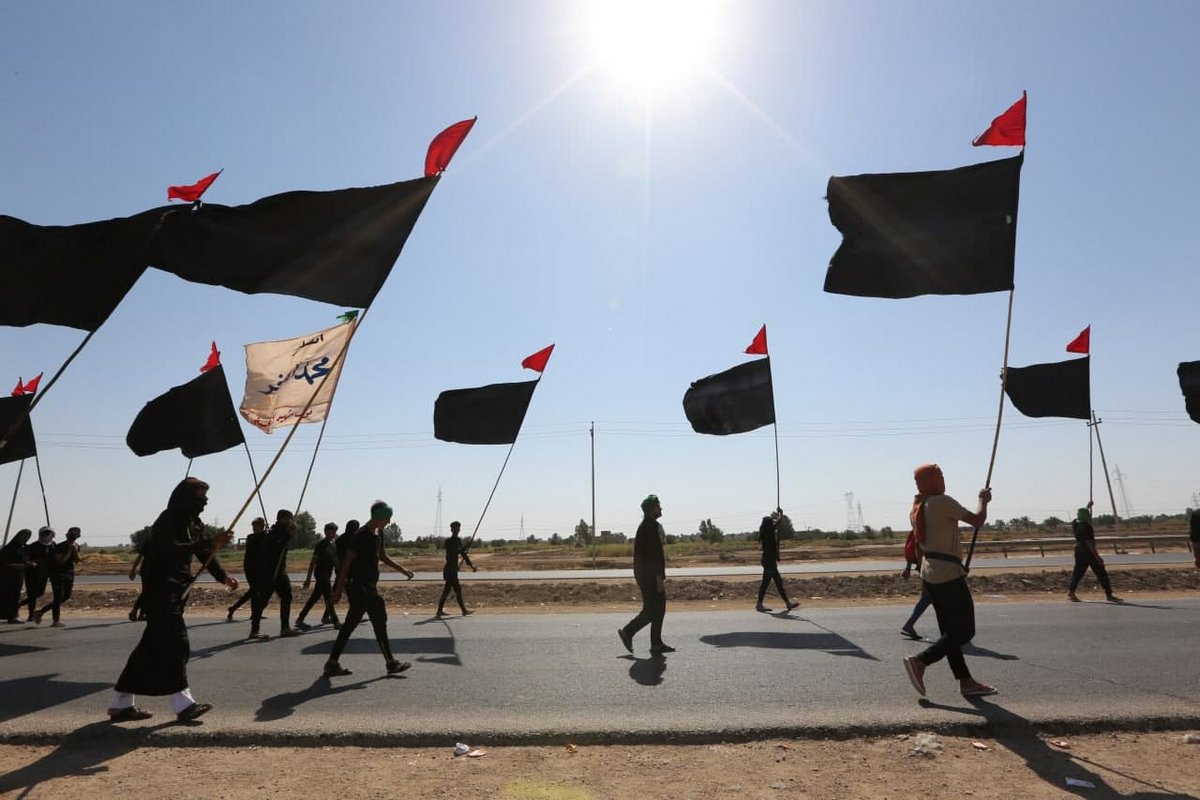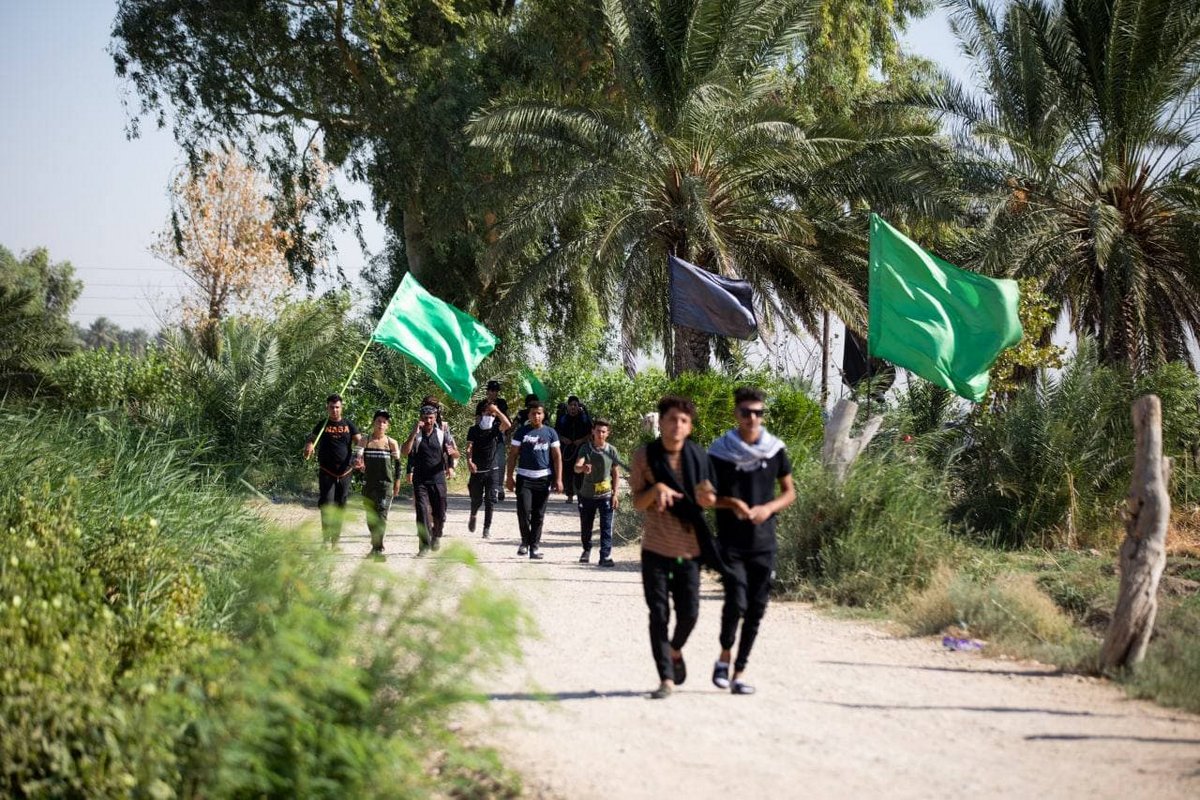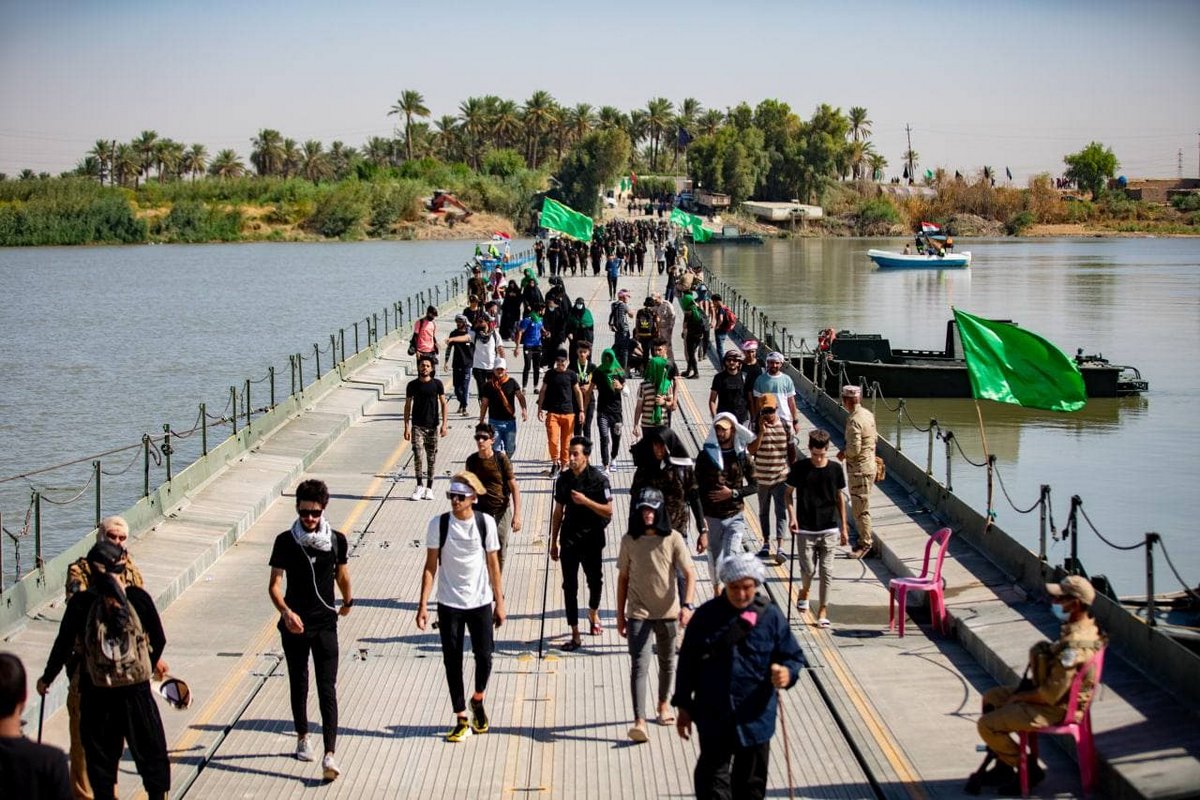Millions of ardent lovers, in a demonstration of unfathomable love and devotion for their beloved, walk seamlessly and untiringly from one sacred city to another, day and night, braving inclement weather and ominous security threats. Men and women, young and old, come from different corners of the world and converge in one place. They call it heaven.
It is not an excerpt from a gripping page-turner, laced with figments of imagination. It is a beautiful miracle I saw unfold before my eyes two years ago. A miracle that repeats every year.
If you haven’t guessed already, I am talking about the largest and the greatest rally against terrorism and extremism that takes place in the second lunar month, forty days from Ashura, which marks the martyrdom of Imam Hussain (AS) and his followers in the desert plains of Karbala 14 centuries ago.
It’s not merely a walk. It is a mark of protest against all forms and manifestations of terrorism, fascism, imperialism, despotism, and oppression perpetrated by state and non-state actors.
It is a rallying cry in support of the oppressed, weak and powerless. It is a reaffirmation of the pledge to uphold the principles exemplified by the ‘master of challengers’ in Karbala.
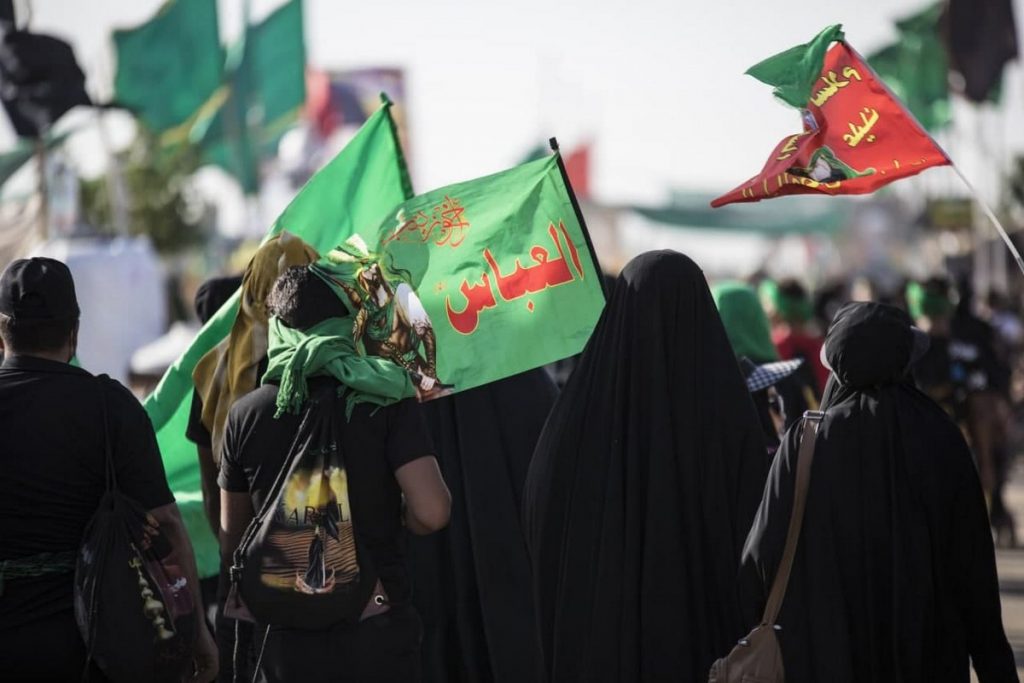
The journey of a lifetime
Arbaeen walk takes place from Najaf to Karbala – from the final resting place of the ‘commander of the faithful’ to that of the ‘master of the martyrs’. It is a journey of love.
Two years ago, I was blessed with an opportunity to embark on this life-changing journey. It was the fulfillment of a long-cherished dream. For years, I had heard fascinating stories from those who traveled there before me. I also watched video documentaries and read articles and travelogues about it. Now it was time to live the dream. The feeling was surreal.
As a journalist, my work requires me to travel extensively. It has taken me to many amazing places past several years. But this time it was not work, but love that was taking me to Iraq.
Exactly a week before Arbaeen, I grabbed my backpack and boarded a bus at south Tehran’s bus terminal for Shalamcheh, a border town in western Khuzestan province. The bus reached the border in the wee hours of morning. As we de-boarded the bus, the scenes were spectacular. Tens of thousands of people were jostling for space to enter Iraq by foot. I had never seen such scenes in my life. Everyone was visibly excited for the journey ahead. The chants of ‘Ya Hussain’ filled the air, as the sun peeked slowly over the misty desert horizon.
It was a long wait at the border terminal, but nobody seemed to grumble. I stood in a serpentine queue for about three hours before I could cross over. The moment I stepped on the soil of Iraq, I was reminded of Neil Armstrong’s words when he touched down on the lunar surface. It was a small step but a giant leap. The feeling was overwhelming. I had made it.
After a walk of few kilometers in ‘no-man’s land’ that divides the two countries, I boarded another bus on the Iraqi side of border to Najaf. It was a long and arduous journey in a bus teeming with pilgrims but the excitement and eagerness to reach the destination overshadowed everything. All minds and eyes were glued to the golden dome of Imam Ali’s (AS) mausoleum in Najaf. Despite weariness, no one slept on the way. When the bus finally halted at the terminal in Najaf, it was unreal. We were in the city of the ‘commander of the faithful’.

Prelude to the walk
In Najaf, streets were teeming with pilgrims who had flocked from different parts of the world. Local people had set up stalls, serving visitors sweetened drinks, fruits and snacks. I had heard about the hospitality of Iraqis and here I was experiencing it. As I made my way through the crowd, two young boys who sensed that I was a foreigner offered to host me in Najaf.
It was a beautiful and kind gesture from complete strangers with whom the only relation I had was love for Ahlulbayt. We happened to be the devotees of the man who was known in the city of Kufa as the ‘father of orphans’ for his nobility and large-heartedness.
I politely turned down their offer as one of my school-time friends in India, now a student at the Najaf seminary, was waiting for me. The food stalls were all around me, and food was being served with love and warmth, but somehow my hunger had fizzled out. I just wanted to reach the shrine of Imam Ali (AS). It was walking distance from the terminal and I took steps as briskly as I possibly could. The crowd kept swelling around me and my marathonesque speed diminished. It seemed the whole world had converged there.
There are many small, winding lanes around the shrine and all of them were crammed with people. After much labor, I reached a point from where I could see the beautiful golden dome of the shrine giving out its radiance. I momentarily stood still and had a long, sharp look at it. This was a moment I had waited for so long.
The walk continued uninterrupted until I reached close to the shrine. The next challenge was to go inside the shrine. I stood at the imposing gates, with barely any space to put my foot down. A few moments later, a tsunami of people pushed me toward the main hall of the magnificent shrine. Tears yelled from my eyes irrepressibly. Here I was, in the city of my Imam, inside his shrine, beneath his dome, right in front of his grave. I wanted to believe what I was seeing, feeling and experiencing. I wanted to believe that it was real, not a dream.
Inside the shrine, I saw people of different nationalities, different languages, different skin colors, different age groups crying, screaming, smiling, beaming – a whole range of pure human emotions. ‘Ya Ali’ was reverberating from all corners, a chant that has a universal appeal, a slogan you associate with the campaigners of truth and justice everywhere.
My two days in Najaf gave me a lifetime of memories to cherish. I stayed at my friend’s house, close to the shrine, but my host was Amiral Momineen (AS) himself. I felt at home. I never felt that way anywhere else, until I reached Karbala.
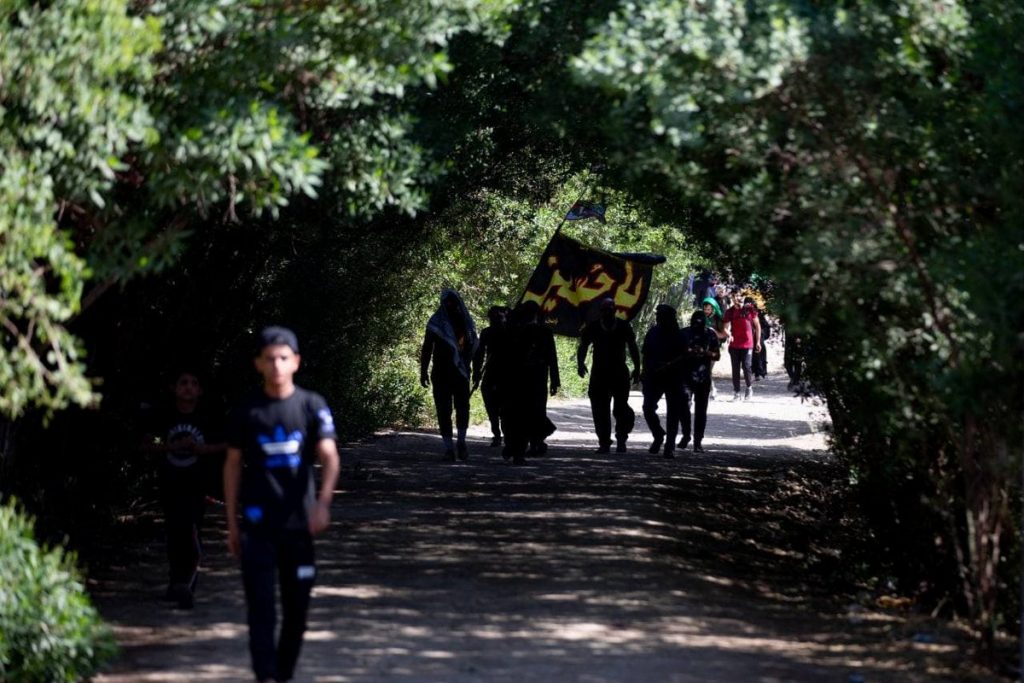
The walk to heaven
It was finally time to head toward the land that I had heard about, read about, and thought about. The land soaked in the blood of 72 martyrs, including the grandson of the apostle of God. Whenever the talk veers to Karbala, our eyes turn moist. With these tears, as Imam Khomeini once said, we have razed to ground powerful empires.
Karbala is an idea, a concept and a movement that will always have significance and relevance. Imam’s uprising in those desert plains should strengthen our resolve to speak truth to power, to be the voice of voiceless, to campaign for truth and justice. As Dr. Ali Shariati says, martyrs gave their blood, now survivors have to carry the message of that blood to future generations. Imam Hussain (AS) gave blood and Hazrat Zainab (SA) became an eloquent tongue of that blood.
Arbaeen walk is an endeavor that seeks to keep alive the movement of Karbala, to convey the message of blood to future generations. It is a movement against terrorism, fascism and despotism. It is a movement that seeks to safeguard and promote human values of love and compassion and condemn bigotry, tyranny and exploitation of powerful elites. It is a movement for humanity and its appeal cuts across the barriers of religion, caste, color and creed, which is precisely why non-Shias or for that matter even non-Muslims join this greatest march on earth.
For one week prior to Arbaeen, every day tens of thousands start the walk towards Karbala from Najaf. We began our walk three days before Arbaeen from the compound of Imam Ali (AS)’s shrine. The streets were swarming with people wearing black dresses, holding flags, banners and placards, and chanting ‘Labbaik Ya Hussain’. It was not a dream anymore. I believed what I was seeing.
The whole journey of around 80 km (50 miles) from Najaf to Karbala is marked with 1400 poles, corresponding with the number of years that have passed since the tragic event of Karbala. It takes about two days and two nights to cover this stretch depending on the pace of walk and stoppages in between. When we started the walk, it was drizzling with a gentle breeze. There were men, women, children and elderly all around me, walking towards the same destination.

For the love of Hussain (AS)
Along the way from Najaf to Karbala, stalls were set up by local residents, charities, mosques and foreign aid groups to ensure no pilgrim goes hungry or thirsty. Cooks prepared massive quantities of stewed lamb, grilled fish, beans, fresh bread and rice. There were small makeshift tents lined with foam mattresses and woolen blankets for people to rest or sleep. For those tired, there were masseurs to give them quick and revitalizing massage. For shoes covered with dust, there were volunteers to polish them. There were also mobile bathrooms to have a quick shower and mobile ambulances in case of a medical emergency. And they charged absolutely nothing. Just for the love of Ahlulbayt.
In recent years, before the pandemic struck, the rush of pilgrims on Arbaeen went up tremendously. The year I went, the figure touched the staggering 15 million, even though the official figure was different. The year before that was the first Arbaeen pilgrimage since the Iraqi government declared thumping victory over Daesh. All these years, people have been going on this pilgrimage despite the Daesh presence in the country, which is quite remarkable. Only those with unflinching faith and unshakeable conviction are capable of taking such huge risks. It is safe to suggest that this greatest protest against terrorism was a key factor in the elimination of the dreaded terrorist group from Iraq.
Security concerns, however, did not play on my mind. Before Iran, I spent a few years in Afghanistan, reporting on the daily incidents of violence. And I grew up in Kashmir, the world’s largest militarized zone. It was normal for me. On the way, I grabbed a flag with ‘Ya Abal Fazl’ in one hand and a placard related to my own bruised and bleeding homeland – Kashmir – in the other hand. I felt like a soldier dressed up for the war. It was overwhelming with a sea of people walking, running, scampering, crawling towards the abode of Aba Abdillah (AS).
On the way, I witnessed many incredible scenes. I saw a young man carrying his elderly mother on his shoulders. I saw a father pushing a wheelchair with his physically impaired son perched on it. I saw a 3-year old girl standing on a bench in the middle of the night offering sweets to the travelers. I saw families walking together, a grandfather holding the hand of his granddaughter, singing soul-stirring elegies in the memory of the martyrs of Karbala.
Millions of people walking towards Karbala had different nationalities, came from different cultures, spoke different languages, but what united them was their love for Ahlulbayt and commitment to honor their memory. It was like small tributaries merging into a gigantic sea. They proudly held aloft flags of their respective countries and marched in unison. Majority of them were Iranians, but many of them also came from Lebanon, Azerbaijan, Pakistan, India, Kashmir, Turkey, Syria, Indonesia, and some European countries.
I met two university students from Australia who had come all the way from Sydney to witness the spectacle. They had heard about it from friends which prompted them to embark on the awe-inspiring journey. “This is spectacular. I have never seen anything like this, such massive crowd and yet so well-organized,” one of them told me in our ‘walk the talk’. “Saudi authorities should learn from Iraqis how to manage such a big religious gathering.”
I bumped across people from different nationalities and we instantly hit it off. The conversations ranged from Iraq’s successful fight against Daesh, America’s war crimes in the region, the secret dalliance of Arab states with the Zionist regime, situation of religious minorities in South Asia, and the relevance of Karbala in our times. We walked and talked and discovered that we agreed on many things. We became friends and companions in the walk.
This is how Arbaeen can be a stimulating intellectual exercise and a cultural exchange between people of various nationalities and cultures that come together for a common cause.
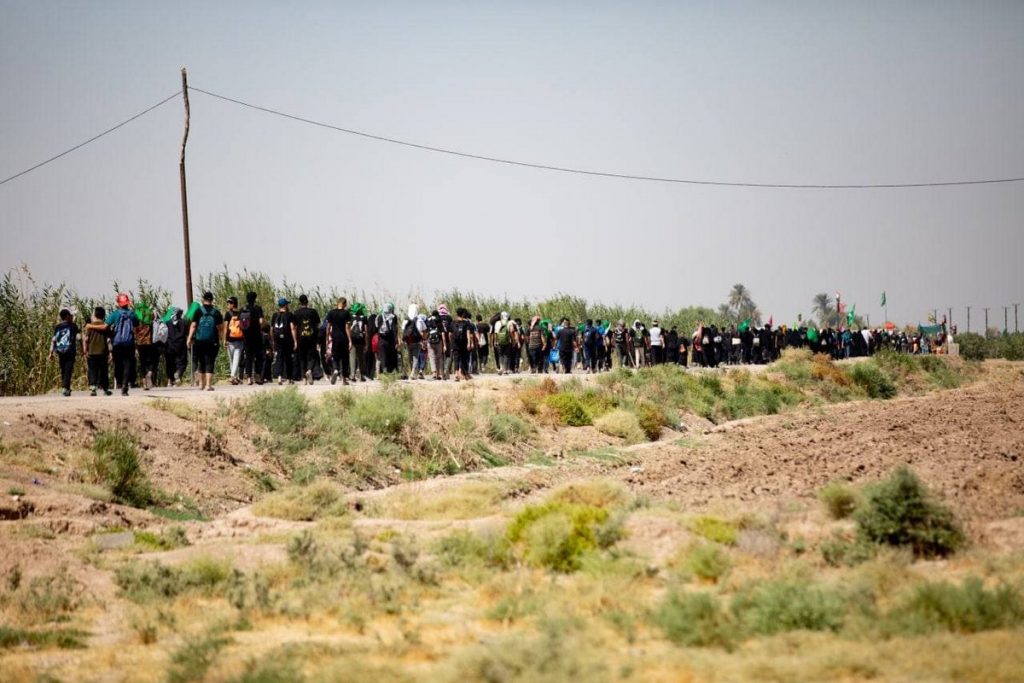
Hospitality and kindness redefined
On day one of the walk, I met some friends along the way. Days were relatively hot and nights were extremely cold. At every step along the way, there were friendly hosts urging walkers to sit for a sweetened black Iraqi tea and snacks.
We stopped at one small stall where a 30-something husband and wife were serving tea and fresh dates to travelers. They belonged to a local village and worked in farms to earn money for livelihood. Serving the guests of Imam Hussain (AS), the man told me, was a privilege for him.
“I save money every month from my meager earnings and accumulate all the savings to spend them on Aba Abdillah’s (AS) guests on Arbaeen. I can starve myself to make sure pilgrims have no reason to complain.” His words touched me deeply.
We continued on the journey until the night fell and then halted to sleep for a few hours before resuming the walk. All tents were packed and there was hardly any space to lie down. The night was dark and cold as we looked for shelter. Some young boys came from nowhere and offered us some woolen blankets, which saved us from the potential cold stroke.
A few meters away, an elderly man said something to us in Arabic that we didn’t understand. Then he gestured towards a small roadside tent and led us inside. Luckily there was still some space left. It’s amazing the way complete strangers show such kindness and compassion there.
At the break of dawn, we woke up for prayers and then resumed the walk until afternoon prayers, with few hurried tea breaks in between. On the way, the buzz was electrifying as we inched closer to our destination. Iranian pilgrims recited Farsi elegies, Indians and Pakistanis recited Urdu dirges, pilgrims from Lebanon and Syria joined the chorus with Arabic latmiyas. All melodies combined to create a heartwarming ambience.
Following the afternoon prayers, we walked briskly, perhaps out of excitement. We started counting the number of poles we left behind until a big billboard appeared on the way: ‘Welcome to Karbala’ written in Arabic. My heart skipped a beat. The moment had arrived.
I was in Karbala but the shrines were still a few miles away. It was an unbelievable crowd, barely a space to breathe. But who wants to breathe in Karbala, I told myself. I would proudly breathe my last in Bainul Haramian, in between the shrines of two brothers. Slowly, very slowly, the crowd moved forward until the shrine of Aba Abdillah (AS) appeared before my eyes.
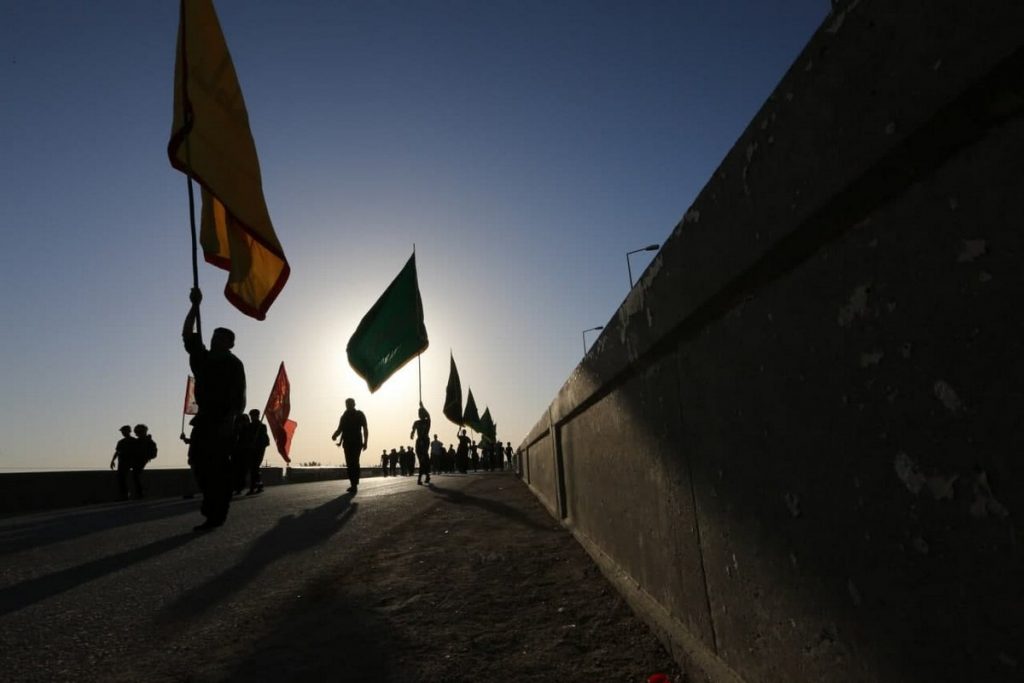
Welcome to Karbala
I was officially in heaven. Every thought disappeared from my mind. All I could think of was that fateful day 14 centuries ago when a small group of holy warriors confronted the army of a mighty empire. The scenes started appearing before my eyes. An infant child being taken to the battlefield, a young man fighting like a seasoned warrior, a standard bearer going to fetch water from a nearby stream and never coming back, little children crying of thirst and the beloved grandson of the apostle of God crying out loud: ‘Is there anyone to help me’.
The question was not directed at the soldiers of Yazid ibn Muawiya. Imam Hussain (AS) expected no mercy from them. It was directed at his followers. It was directed at us. This march of the millions from Najaf to Karbala every year is in response to that call, which still echoes in the hearts and minds of believers.
As I stood in front of the shrine of the master of martyrs (AS), time came to a grinding halt. There were people from all sides trying to get closer to the shrine. In the crowd I lost my fellow companions. But it hardly mattered now. I was standing next to Hussain ibn Ali (AS). Everything else lost the meaning. I felt like a mighty warrior who had conquered the world.
With much difficulty, I made my way through the crowd into Bainul Haramian, a small stretch between the shrines of brothers – Imam Hussain (AS) and Abol Fazl Abbas (AS). This is an epicenter of universe for the lovers of Ahlulbayt (AS). I looked at Hussain (AS) and then I looked at Abol Fazl (AS), I felt as if they were sitting together and watching us. I had never felt so emotional in my life. It was my first visit to Karbala and here I was standing between the two brothers who changed the course of history with their unflinching faith and indomitable valor.
I walked inside the shrine of Imam Hussain (AS), with a tornado of people, and saw it jam-packed. In one corner of the hall, I found a little space to stand and recite Ziyarat e Arbaeen. I didn’t want to leave that hall. I wanted to make it my home.
Then I went to the shrine of Abol Fazl Abbas (AS), the standard bearer of Karbala, whose name was enough to leave enemies in disarray. As I slowly walked inside his shrine, I could see he still had the same aura. People screamed and cried ‘Ya Abol Fazl’, ‘Ya Alamdar’. There was hardly any eye that was not moist.
One Iranian group recited the beautiful elegy inside the hall – Alamdar nayamad (The flagbearer did not return). As children, we are often told to chant ‘Ya Abol Fazl’ if we are afraid of anything or if we sense any danger. Here I was, inside the shrine of Abol Fazl, calling him, sharing my secrets, telling him about my ordeals. I know he listened.
The two days in Karbala were life-changing for me. I did not sleep at night. I sat in Bainul Haramain and gazed at the two shrines all night.
After two unforgettable days in Karbala, I left for Baghdad to see visit Imam Moosa Kazim (AS), my great-grandfather. The crowd was comparatively less here. The next day I left for Samarra to visit Imam Askari (AS), which brought back memories of the 2006 terrorist attack. Those terrorists, like Yazid, have no trace anymore. From Samarra I took a bus to Mehran border, and returned to Iran.
The pilgrimage came to an end. The most beautiful 10 days of my life. I had made a solemn pledge to return every year. That, however, didn’t happen as Covid-19 pandemic disrupted everything. But the pledge remains in place, the pledge of allegiance to the beloved, the meaning of which can be understood only by true lovers.
The views expressed in this article are the author’s own and do not necessarily reflect Al-Ghadeer’s editorial stance.
By| Syed Zafar Mehdi is a Tehran-based journalist editor and blogger with over 10 years of experience. He has reported extensively from Kashmir, India, Pakistan, Afghanistan and Iran for leading publications worldwide.
 Alghadeer TV Alghadeer TV
Alghadeer TV Alghadeer TV



